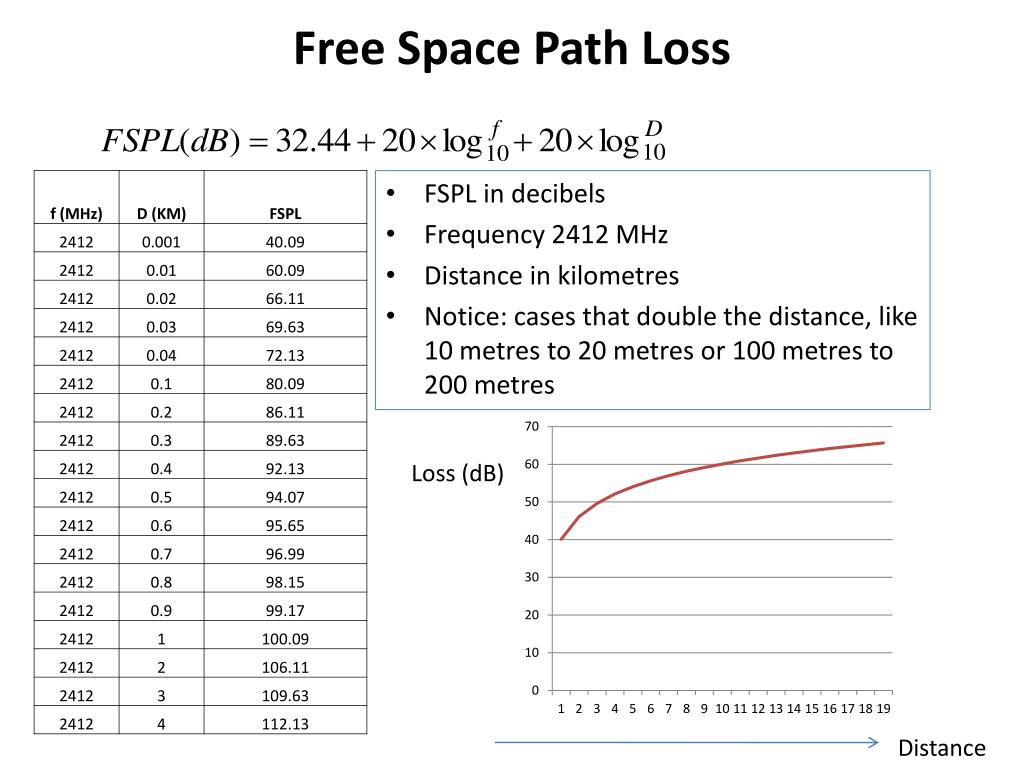

The FSPL is rarely used standalone, but rather as a part of the Friis transmission equation, which includes the gain of antennas.įree-space path loss is proportional to the square of the distance between the transmitter and receiver, and also proportional to the square of the frequency of the radio signal. Calculator is based on Recommendation ITU-R P.525-4 and allows you to calculate Free Space Path Loss depends on frequency and Distance between Tx and Rx. Our free space path loss calculator can help you obtain the attenuation of signal strength through free space between an emitter and a receiver. A discussion of these losses may be found in the article on link budget. It does not include any loss associated with hardware imperfections, or the effects of any antennas gain. To calculate the probability of outage due to multipath propagation of microwave links the ITU-R probability model can be used which describes a single frequency (or narrowband) fading distribution suitable for large. The loss depends on the distance travelled by signal and its frequency. So it assumes that the antenna gain is a power ratio of 1.0, or 0 dB. This attenuation is described as Free-space Loss. It is defined in “Standard Definitions of Terms for Antennas”, IEEE Std 145-1983, as “The loss between two isotropic radiators in free space, expressed as a power ratio.” Usually it is expressed in dB, although the IEEE standard does not say that. In telecommunication, free-space path loss ( FSPL) is the loss in signal strength of an electromagnetic wave that would result from a line-of-sight path through free space (usually air), with no obstacles nearby to cause reflection or diffraction.


 0 kommentar(er)
0 kommentar(er)
